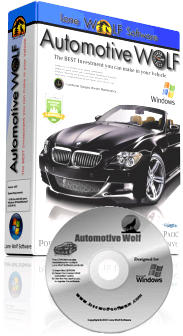|
Windows XP/7/8/10/11
|
 |
 No Risk 30 Day Free Trial |
HOME | INTRO | FEATURES | DOWNLOAD | PURCHASE | SCREEN SHOTS | REVIEWS | CAR CARE TIPS |
| Car Care Tips - Tire Rotation |
| Tire rotation is important for a car for
several reasons: 1. Even Tire Wear: Tires wear out at different rates depending on their position on the vehicle. The front tires, especially on vehicles with front-wheel drive, tend to wear more quickly due to the additional weight and the forces involved in steering and braking. By regularly rotating the tires, you can ensure that they wear out more evenly. This extends the lifespan of the tires, allowing you to get the most mileage out of them before needing to replace them. 2. Improved Traction: As tires wear down, their tread depth decreases, reducing their ability to provide optimal traction on the road. By rotating the tires, you distribute the wear more evenly, helping to maintain consistent traction across all tires. This is particularly important for vehicles that experience varying road conditions or for those that require good traction for safety, such as during braking or cornering. 3. Enhanced Handling and Performance: Unevenly worn tires can affect the handling and performance of the vehicle. If the front tires have significantly less tread than the rear tires, it can lead to imbalanced handling characteristics, reduced stability, and potentially unsafe driving conditions. Regular tire rotation helps maintain balance and ensures that all tires perform at their best, contributing to better overall handling and performance of the vehicle. 4. Maximized Fuel Efficiency: When tires wear unevenly, it can lead to increased rolling resistance, requiring the engine to work harder to propel the vehicle forward. This extra resistance translates into reduced fuel efficiency and increased fuel consumption. By rotating the tires regularly and maintaining even wear, you can help maximize fuel efficiency and potentially save on fuel costs. The specific tire rotation pattern and frequency may vary depending on the vehicle's make, model, and tire type. It is recommended to follow the guidelines provided by the vehicle manufacturer or consult with a qualified mechanic to determine the appropriate tire rotation schedule for your car. |
| How often should I rotate the tires on my
car? |
| Tire rotation is an important maintenance
task that helps promote even wear on your car's tires, extending
their lifespan and ensuring optimal performance. The recommended
frequency for tire rotation varies depending on the vehicle, the
type of tires, and the driving conditions. However, a common
guideline is to rotate your tires every 5,000 to 7,500 miles (8,000
to 12,000 kilometers). Regular tire rotation helps distribute the wear more evenly because the tires on different positions of the vehicle can experience different loads and forces. By rotating the tires, you can help prevent uneven wear patterns and maintain better traction and handling. It's worth noting that some vehicles, especially those with different tire sizes on the front and rear, may have specific rotation patterns recommended by the manufacturer. Checking your vehicle's owner's manual will provide you with the manufacturer's recommendations for tire rotation intervals and patterns specific to your car. If you're unsure or want personalized advice, it's always a good idea to consult a qualified mechanic or refer to your vehicle's manufacturer for the most accurate information based on your specific vehicle and driving conditions. From Our Expert Technical Consultant: On front wheel drive cars, it is especially
important to rotate your tires periodically because the front tires
wear faster than the rear. Uneven tire tread thickness, front to
rear, will give you uneven braking and poor handling, especially in
the rain. If you don't rotate the tires, you'll wind up replacing
them two at the time, which means you'll always have uneven tread
thickness. Replacing tires in a matched set of four will keep the
handling and braking traction of the car balanced. On certain cars,
you may experience an additional problem when you do not rotate the
tires: tire noise or humming on smooth roads. If you notice a
humming noise, check the rear tires for a saw-tooth wear pattern by
running your hand back and forth along the shoulder of the tire
tread. Be careful not to cut yourself on debris or exposed steel
belt wire. If it feels smooth in one direction, but jagged in the
other, you may have found some of your noise. This condition happens
on some front wheel drive cars with tires that have tread blocks on
the shoulder of the tire. Rotating this tire to the other side of
the car should even out this type of wear and quiet down the
humming. Check your owner's manual for the proper rotation method.
Warning: If you have directional tires such as Goodyear Aquatreads
they must never be crossed over to the other side of the car. You
can tell by the fact that they will have a clearly marked arrow on
the sidewall showing the direction of rotation. |
Easily Track and Manage Maintenance Schedules for any type of Vehicle by Time, Distance or Hours
30 Day FREE Trial
HOME | INTRO | FEATURES | DOWNLOAD | PURCHASE | SCREEN SHOTS | REVIEWS | Videos | FAQ | EULA | CONTACT US | CAR CARE TIPS |
Copyrightę Lone Wolf Software - www.lonewolf-software.com
Automotive Wolf Car Maintenance Software can also be found at :
Car Care | Contact Management | Home Inventory & Management | Backup | Text & Document Organization | Web Site Monitoring | ToDo Lists



